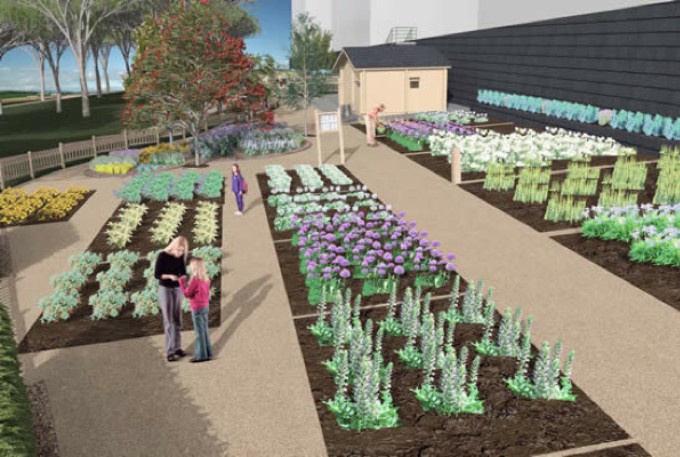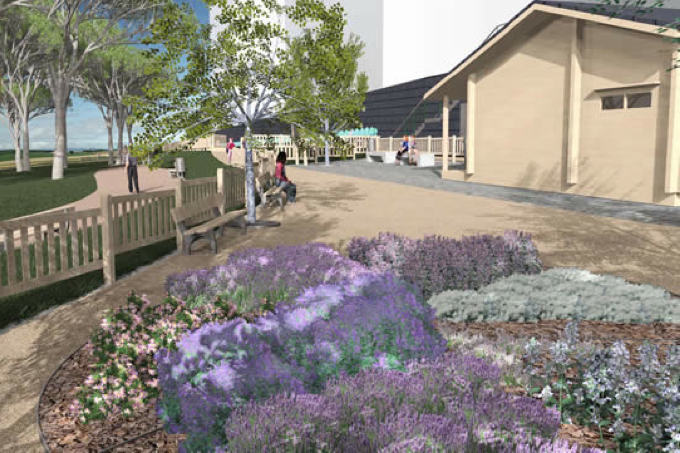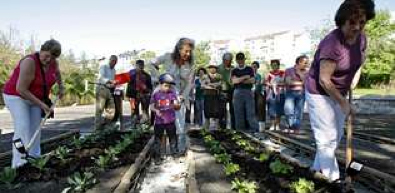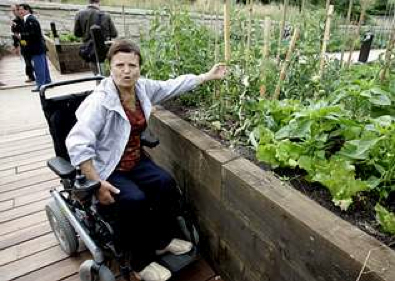Ourense Vegetable gardens
3. September, 2013
Contributor: Ourense City Council
A successful example of urban orchards focused to education on a rururban mid-term city
Concept
When this local policy started on 2010 “urban orchards” still were trend models of socio-environmental policy on Galicia. They were growing on entire region with this kind of initiatives on all cities. These actions still expand for villages on Galicia nowadays.
Moreover, Ourense has a lot of green spaces as parks and gardens, with expensive maintenance, and lot private and public floors without use too caused for Spanish construction bubble.
This opportunity was based under a opportunity of high external co-financing based on FAIL programme (State financing at 80% to infrastructures) on 2010 as a state strategy against unemployment on construction sector. This financial instrument made possible this investment to city council for over 90.000 Euros.
Promoted by Education council of city, final objective was developing “urban orchards” on the city with one specific character: Improving a clear educational focusing on this activity.
Result
Located on working class projects called “Mariñamansa” our initiative started with investment of 347.000 euros (90.000 cofinanced by Education Department), over a land of 2.262 m2, 13% of this neibourhood´s green zone.
This mapping had five different spaces:
- 18 orchards to citizen´s users.
- 2 to people with reduced mobility.
- 2 orchards strictly focused to the education activities.
- One enjoying zone focused to schools with orchard and flower zone.
- One common space with rest structures and a little garden of flowers.
During first 3 months users farmed first vegetables, fruits and flowers…
Nowadays, two years and a half:
- UNICEF awards it last year as “Best practice on local policies”
- Urban orchards” are working full and user´s application to get orchards has queued list now.
The program will continue its development on 2013-2014:
- Mariñamansa: Education Council planning will extend 20 orchards more. All of them must be cultivated only under ecological agriculture principles.
- Montealegre Forest: Environment council will plan another space on the biggest botanic park of the city to eat all queued demand of citizens to be users of the program.
Benefits
- Environmental:
- Local biodiversity fostered
- New landscapes created on green and unproductive zones.
- Improving environmental quality, always under ecological agriculture principles (obligatory on Mariñamansa new extension as an example for rest)
- Social:
- This initiative has visits of schools week by week to empower intergenerational dialogue between child and old people (Major percentage of users)
- Integration of old people migrated from rural zones reducing social (Depopulation feelings) and cultural impact (Culture decadence) on them.
- Better life quality:
- Active Ageing: Users develops physical and mental activity
- Fresh and seasonable food: Better nutrition for users
- All common spaces and two orchards are accessible for people with reduced mobility:
- Economical
- Recycled a little part of massive situation of unemployment (27%) between intergenerational dialogue and return to agriculture sector.
- Personal consumption fostered on lowest incomes context.
Pro and Contra
- Strong points:
- Very benchmarkable
- Horizontal policy with social, cultural and economic effects.
- Local public smart-saving:
- Low maintenance of green zones.
- Turn on unused spaces.
- Self-consume on crisis.
- Micro-enterprenneuring and training for agriculture sector…
- Social impact on different groups: Oldies, child, unemployed people….
- Culture exchange between traditional knowledge and new methods trough intergenerational dialogue.
- Local public smart-saving:
- Weak Points:
- We think this local policy must be transferred slowly to cities that are executing measures to empower their rural lands perimeter to food production, as we, to not develop a “call effect” on potential “returners” of these rururban zones.
- We had a bad experience with 2 Neibourhood associations that rejected the project if they don´t integrated after intervention.
What are the lessons learn to be used/transferred/implemented in the other partner cities?
This local policy can be benchmarked in all kind of cities if you adjust characters referred after.
Question to the network
Do you have any local policy in this sense?



